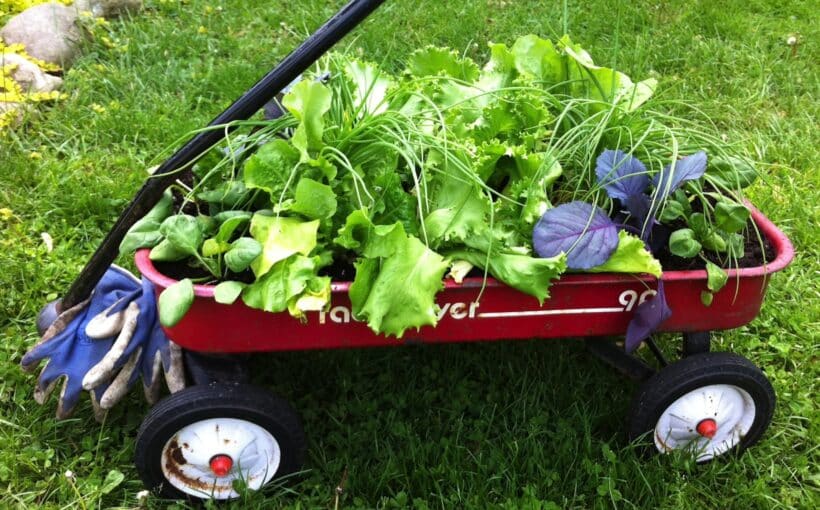Where you put your food garden really makes a difference. Follow our tips for finding just the right spot!
Find a place in the sun.
Most vegetables need full sun (at least six hours of direct sun a day). Direct sun means that the sunbeams are actually hitting the plant, not being filtered through shade.
- Tomatoes and other plants we eat the fruit of (peppers, eggplants, and melons, for example) really prefer eight hours or more of sun.
- Most fruit trees and shrubs also require full sun.
Some vegetable crops can be grown in part sun (four to six hours of direct sun a day).
- Anything that we eat primarily the leaves of—spinach, lettuce, greens—will do fine with some shade.
- You can try carrots, radish, and other salad crops too.
- Some brambles (like raspberries) can be grown in part shade, and some fruits (like gooseberries) actually prefer it.
- Strawberries are a great groundcover; while they’ll produce more in the sun, I’ve grown them in part shade too.
Assuming you don’t have any trees in the way, the best places for food gardens usually face south (which gets sun all day), east (morning sun and afternoon shade), or west (morning shade and afternoon sun), southeast, or southwest. If you have a north-facing garden, the best place for food is likely to be farther away from the house.
Keep it close.
One of the secrets to a good-looking, productive food garden is to keep your garden close to the house. If you have to pass the garden every time you leave the house, you’ll notice when plants are struggling.
You needn’t grow all your vegetables in one place. You may have a salad garden in the part-shade spot by the back door, a patch of herbs in full sun a few steps from the front porch, and your melons and tomatoes along the fence.
Don’t forget the water.
Make sure your garden has access to water. With careful planning, you can minimize the amount of water you use. But during droughts and early after planting, you have to water, so only plant where you can get to the spigot or rain barrel.
Decide on beds.
What best suits your space: raised beds, in-ground beds, or containers?
Raised beds look great and can go in fast, but they’re more expensive than growing in the ground. In-ground beds can be made quickly (with lots of labor), or slowly (with little labor), but usually take a while to become just right. And containers are great on concrete or patios, but are often expensive (and require a lot of water).
Check out When to Choose a Raised Bed Garden for more help figuring out what’s right for you.
Screen out the animals.
Most Indiana gardeners have to deal with deer. If you have deer, you have to have a fence. You can use deer fencing, a plastic barrier that comes in rolls and is put up with stakes, or build a wooden fence. If you go with fencing, it’s going to have to be tall (at least six feet). Or you can place two lower fences parallel to each other; deer don’t like to do the broad jump.
If your problem is smaller animals like rabbits, try backing your wooden fence with wire fencing to keep them out. Bury the fencing several inches deep to prevent critters from digging under the fence.
Start small.
Gardening is a joy, but it’s also work. So start small. Makes sure you can weed, water, and stay on top of what you have before you expand!
You can grow enough fresh salad crops for two average adults in a space 4’ x 4’, if you plant intensively. If you plan to grow some larger plants, such as tomatoes or melons, you might want two 4’ x 4’ beds.
When plating in small beds, use the space efficiently by employing intensive and succession planting strategies. For example, instead of a row of veggies with wide spaces between the rows, try spacing your plants in a hexagon shape. Look on your seed package for the distance that plants should be “thinned to,” and plant your seeds based on that spacing. (The traditional “seed spacing” requires that you plant more seeds than you want plants, then thin out the seedlings you don’t want.) For more about this, see our post on Square Foot Gardening.
Keep your beds small enough that you can comfortably reach the middle of them from the path—usually 3’ to 4’ wide. That way you stay on your paths and avoid compacting the soil. Create some permanent paths and stay on them. Mulch them to keep weeds down.
